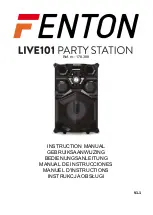
22
RTR12 & RTA12 Series (Serial No. 884764-) Rotary Tillers 311-785M
2/11/21
Section 4: Maintenance and Lubrication
Section 4:
Maintenance and Lubrication
Maintenance
Proper servicing and adjustment is the key to the long life
of any implement. With careful inspection and routine
maintenance, you can avoid costly downtime and repair.
The parts on your Rotary Tiller have been specially
designed and should only be replaced with genuine Land
Pride parts. Do not alter the tiller in a way which will
adversely affect its performance.
Check all bolts and pins after using the unit for several
hours and on a regular basis thereafter to ensure they are
tight and secured.
Replace worn, damaged or illegible safety labels by
obtaining new labels from your Land Pride Dealer.
!
CAUTION
For safety reasons, each maintenance operation must be
performed with tractor PTO disengaged, tiller lowered
completely to the ground or onto support blocks, tractor
engine shut off, and ignition key removed.
Tine Replacement
Refer to Figure 4-1 for RTR12 Series Tillers and
Figure 4-2 for RTA12 Series Tillers:
!
WARNING
1. Remove the 2 hex head cap screws and fasteners
from the tine being replaced and then remove tine.
2. Attach new tine to the mounting flange making
certain it is positioned so that the cutting edge
crosses over the mounting flange and leads in
rotation as shown in Figure 4-1 for the RTR12 Series
or in Figure 4-2 for the RTA12 Series.
3. Replace removed cap screws and nuts. Tighten nuts
to the proper torque.
4. Repeat steps 1 to 3 until tines have been replaced.
IMPORTANT:
When ordering, be sure to order
genuine Land Pride replacement tines only and to
order both right- and left-hand tines. Always install
tines with cutting edge facing direction of rotation.
Remove and install one tine at a time
to ensure they are oriented correctly when installed.
RTR12 Series Tine Replacement
Figure 4-1
RTA12 Series Tine Replacement
Figure 4-2
Driveline Protection
Tiller drive components are protected from shock loads
with a two plate friction clutch.
Friction clutches should be “run-in” prior to initial
operation and after long periods of inactivity to remove
any oxidation that may have accumulated on the friction
surfaces. Repeat “run-in” instructions at the beginning of
each season and when moisture and/or condensation
seizes the inner friction plates.
Clutch Run-In
The clutch must be capable of slippage during operation
to protect gearbox, driveline and other drive train parts.
Friction clutches should be “run-in” prior to initial
operation and after long periods of inactivity. To prevent
driveline and gearbox damage, repeat clutch “run-in” at
the beginning of each season and when moisture and/or
condensation seizes the inner friction plates.
30355
30372













































